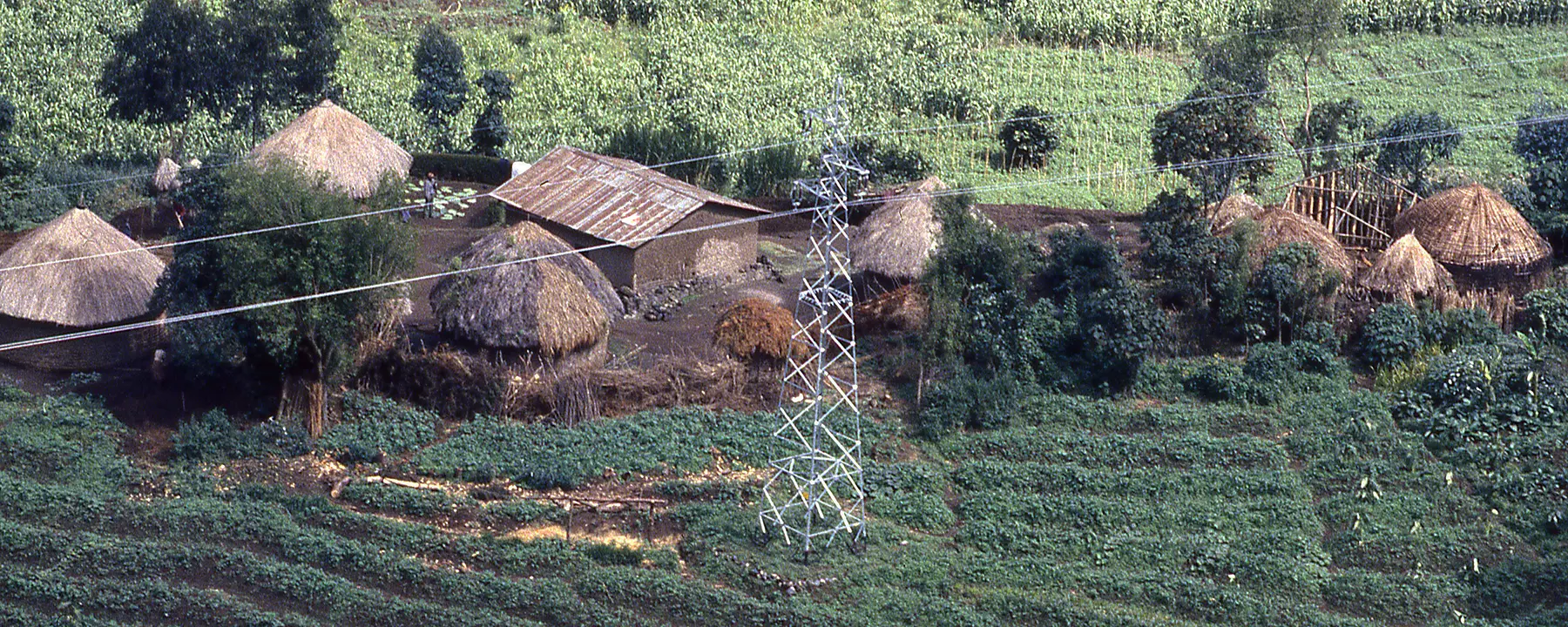Supporting energy-sector reforms as part of a pathway to economic development
Objective
Optimize the Eastern Africa power supply, expand universal access to electricity, increase gender equity in the energy sector, and enhance environmentally and socially responsible economic development.
Approach
Secure funding for clean energy generation, improve institutional performance across the energy sector, expand regional power trade capacity, integrate cross-cutting support, and foster community engagement.
Impact
Achieved nearly 5.2 million direct grid connections, catalyzed the generation of 294 MW of clean energy, and supported 111 women in securing fulltime jobs in the energy sector.
USAID’s Power Africa-funded East Africa Energy Program (EAEP)
By working to optimize its power supply, modernize its energy systems, and expand electrical services to millions of people and businesses, the fast-growing region of East Africa has taken concrete steps to achieve its economic and social goals. These efforts were assisted by USAID’s Power Africa-funded East Africa Energy Program (EAEP), whose activities focused on advancing clean energy generation and transmission, strengthening regional utilities, and facilitating direct grid connections to support sustainable economic development in East Africa.
RTI was proud to be EAEP’s implementing partner during the five-year project period (December 2018–September 2023). RTI supported Power Africa with technical assistance across these objectives:
- Ensuring partner countries achieved an optimized, well-planned power supply that prioritized the lowest-cost forms of generation and matched supply of new energy to growing demand.
- Increasing the number of residential, industrial, and commercial customers who could quickly and inexpensively connect to the utility grid.
- Implementing state-of-the-art processes and equipment to improve the efficiency, financial stability, and customer service capability of electric utilities and transform them into modern, fully sustainable entities that operate on private-sector principles.
- Supporting all East African nations in integrating their national electrical systems to create a market for the exchange of electricity, increase service reliability, and reduce consumer costs.
Catalyzing reforms in the entire energy sector
Working together, RTI and Power Africa significantly increased online connections to the grid in Kenya and Tanzania/Zanzibar, which led the way in the region, as well as in Ethiopia, Rwanda, Uganda, Somaliland, Eritrea, Burundi, and eastern parts of the Democratic Republic of Congo (DRC). We also collaborated to advance renewable energy generation in those countries, as well as in Djibouti, by supporting financing, planning, permitting, construction, and electric grid integration and upgrade activities, as well as enabling policies and legislation. Other assistance included financial, management, and technical training; capacity strengthening; implementation of computer software systems to improve efficiency, and long-term planning guidance for utilities and other power sector entities.
Across the 10 countries, our partnership continued the impressive work begun under USAID's Power Africa Transactions and Reform Program (PATRP). To that end, we facilitated the final agreements between Ethiopia and Kenya to start power trade and synchronizing the interconnection between Rwanda and Uganda to begin building an East Africa regional power system that can improve the reliability and affordability of electricity.
In Kenya, we also supported the development of energy transmission systems in a socially and environmentally sustainable way, such as through facilitating right-of-way and crop compensation legislation for energy projects and assisting the development of a community engagement strategy. Through a combination of computer software, capacity building, and analysis, we supported Rwanda in assessing and mitigating climate change impacts on its green energy resources. In Somalia, training programs improved the country’s power generation and procurement processes, while a new guide helped potential investors navigate the country’s private sector approach. In Tanzania, training support was provided to strengthen a government-led solar energy initiative to help Zanzibar achieve green energy independence. In Uganda, we collaborated with local utility companies to promote the productive use of energy to help entrepreneurs enhance their businesses—a process that also benefits utilities through improved load capacity and increased energy sales.
Meaningful support for advancing gender equity in the energy sector was provided in Kenya, Rwanda, DRC, Ethiopia, Somalia, Tanzania, and Uganda through internships, coaching, apprenticeships, on-the-job training, and employment opportunities for women in the workforce.
Additional results of the East Africa Energy Program
- Facilitated over 5.1 million connections (commercial, residential, and industrial) to the electrical grid.
- Provided legal, technical, and other professional assistance to secure financing for the generation of 294 MW of clean energy, including hydro, biomass, natural gas, geothermal, wind, solar, and waste-to-energy.
- Aided licensing and other activities to bring another 482 MW of clean energy into operation.
- Assisted three utilities in addressing performance improvement measures (Kenya Power, Ethiopian Electric Utility, and Zanzibar Electricity Corp.) aimed at building and expanding customer bases.
- Enhanced renewable energy development by increasing regional power trade capacity, specifically the Ethiopia-Kenya power trade and Rwanda-Uganda interconnection.
- Amplified gender equity, improved community engagement, and enhanced environmental awareness by integrating and implementing (cross-cutting) these concerns into each activity.
- 1,531.2 km of transmission and distribution lines were energized, tested, and either installed or made operational after being upgraded, rehabilitated, or newly constructed.
- 97 laws, policies, regulations, or standards to enhance energy sector governance were formally proposed, adopted, or implemented.
- 32 strategic planning documents to strengthen the power sector were adopted, implemented, or revised by host governments.
- 297 female interns and apprentices received EAEP gender and capacity building support.
- 13 competitive procurement processes for new generation capacity were implemented.
- Power Africa




